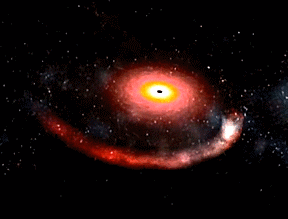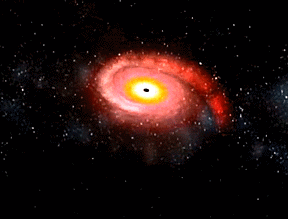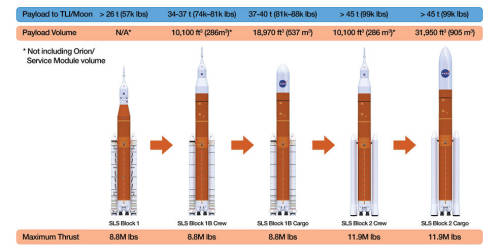Working Too Hard, Feeling Overwhelmed By Family Responsibilities, Or Dealing With An Ongoing Challenge?














Working too hard, feeling overwhelmed by family responsibilities, or dealing with an ongoing challenge?
Maybe it’s time to turn your attention back to yourself and to your own self-care. Although we often brush it aside, self-care is not optional if you want to be happy and healthy.
More Posts from Ocrim1967 and Others










It’s International Asteroid Day!
(Large Asteroid Impact Simulation)
Asteroid Day (also known as International Asteroid Day) is an annual global event that aims to raise awareness about asteroids and what can be done to protect the Earth, its families, communities, and future generations. Asteroid Day is held on the anniversary of the June 30, 1908 Siberian Tunguska event, the most harmful known asteroid-related event on Earth in recent history.
Learn more here
Animation



Unusual Signal Suggests Neutron Star Destroyed by Black Hole
What created this unusual explosion? Three weeks ago, gravitational wave detectors in the USA and Europe – the LIGO and Virgo detectors – detected a burst of gravitational radiation that had the oscillating pattern expected when a black hole destroys a neutron star. One object in event S190814sv was best fit with a mass greater than five times the mass of the Sun – making it a good candidate for a black hole, while the other object appeared to have a mass less than three times the mass of the Sun – making it a good candidate for a neutron star. No similar event had been detected with gravitational waves before. Unfortunately, no light was seen from this explosion, light that might have been triggered by the disrupting neutron star. It is theoretically possible that the lower mass object was also a black hole, even though no clear example of a black hole with such a low mass is known. The featured video was created to illustrate a previously suspected black hole - neutron star collision detected in light in 2005, specifically gamma-rays from the burst GRB 050724. The animated video starts with a foreground neutron star orbiting a black hole surrounded by an accretion disk. The black hole’s gravity then shreds the neutron star, creating a jet as debris falls into the black hole. S190814sv will continue to be researched, with clues about the nature of the objects involved possibly coming from future detections of similar systems. Illustration Video Credit: NASA, Dana Berry (Skyworks Digital)











Pulsar planets are planets that are found orbiting pulsars, or rapidly rotating neutron stars. The first such planet to be discovered was around a millisecond pulsar and was the first extrasolar planet to be confirmed as discovered.
source


Comet McNaught next to the dome of the NTT on La Silla. The picture was taken in January 2007.
Credit: ESO/H.H.Heyer
We Like Big Rockets and We Cannot Lie: Saturn V vs. SLS
On this day 50 years ago, human beings embarked on a journey to set foot on another world for the very first time.

At 9:32 a.m. EDT, millions watched as Apollo astronauts Neil Armstrong, Buzz Aldrin and Michael Collins lifted off from Launch Pad 39A at the Kennedy Space Center in Cape Canaveral, Florida, flying high on the most powerful rocket ever built: the mighty Saturn V.

As we prepare to return humans to the lunar surface with our Artemis program, we’re planning to make history again with a similarly unprecedented rocket, the Space Launch System (SLS). The SLS will be our first exploration-class vehicle since the Saturn V took American astronauts to the Moon a decade ago. With its superior lift capability, the SLS will expand our reach into the solar system, allowing astronauts aboard our Orion spacecraft to explore multiple, deep-space destinations including near-Earth asteroids, the Moon and ultimately Mars.

So, how does the Saturn V measure up half a century later? Let’s take a look.
Mission Profiles: From Apollo to Artemis
Saturn V

Every human who has ever stepped foot on the Moon made it there on a Saturn V rocket. The Saturn rockets were the driving force behind our Apollo program that was designed to land humans on the Moon and return them safely back to Earth.

Developed at our Marshall Space Flight Center in the 1960s, the Saturn V rocket (V for the Roman numeral “5”) launched for the first time uncrewed during the Apollo 4 mission on November 9, 1967. One year later, it lifted off for its first crewed mission during Apollo 8. On this mission, astronauts orbited the Moon but did not land. Then, on July 16, 1969, the Apollo 11 mission was the first Saturn V flight to land astronauts on the Moon. In total, this powerful rocket completed 13 successful missions, landing humans on the lunar surface six times before lifting off for the last time in 1973.
Space Launch System (SLS)

Just as the Saturn V was the rocket of the Apollo generation, the Space Launch System will be the driving force behind a new era of spaceflight: the Artemis generation.

During our Artemis missions, SLS will take humanity farther than ever before. It is the vehicle that will return our astronauts to the Moon by 2024, transporting the first woman and the next man to a destination never before explored – the lunar South Pole. Over time, the rocket will evolve into increasingly more powerful configurations to provide the foundation for human exploration beyond Earth’s orbit to deep space destinations, including Mars.
SLS will take flight for the first time during Artemis 1 where it will travel 280,000 miles from Earth – farther into deep space than any spacecraft built for humans has ever ventured.
Size: From Big to BIGGER
Saturn V

The Saturn V was big.
In fact, the Vehicle Assembly Building at Kennedy Space Center is one of the largest buildings in the world by volume and was built specifically for assembling the massive rocket. At a height of 363 feet, the Saturn V rocket was about the size of a 36-story building and 60 feet taller than the Statue of Liberty!
Space Launch System (SLS)

Measured at just 41 feet shy of the Saturn V, the initial SLS rocket will stand at a height of 322 feet. Because this rocket will evolve into heavier lift capacities to facilitate crew and cargo missions beyond Earth’s orbit, its size will evolve as well. When the SLS reaches its maximum lift capability, it will stand at a height of 384 feet, making it the tallest rocket in the world.
Power: Turning Up the Heat
Saturn V
For the 1960s, the Saturn V rocket was a beast – to say the least.
Fully fueled for liftoff, the Saturn V weighed 6.2 million pounds and generated 7.6 million pounds of thrust at launch. That is more power than 85 Hoover Dams! This thrust came from five F-1 engines that made up the rocket’s first stage. With this lift capability, the Saturn V had the ability to send 130 tons (about 10 school buses) into low-Earth orbit and about 50 tons (about 4 school buses) to the Moon.
Space Launch System (SLS)

Photo of SLS rocket booster test
Unlike the Saturn V, our SLS rocket will evolve over time into increasingly more powerful versions of itself to accommodate missions to the Moon and then beyond to Mars.

The first SLS vehicle, called Block 1, will weigh 5.75 million pounds and produce 8.8 million pounds of thrust at time of launch. That’s 15 percent more than the Saturn V produced during liftoff! It will also send more than 26 tons beyond the Moon. Powered by a pair of five-segment boosters and four RS-25 engines, the rocket will reach the period of greatest atmospheric force within 90 seconds!

Following Block 1, the SLS will evolve five more times to reach its final stage, Block 2 Cargo. At this stage, the rocket will provide 11.9 million pounds of thrust and will be the workhorse vehicle for sending cargo to the Moon, Mars and other deep space destinations. SLS Block 2 will be designed to lift more than 45 tons to deep space. With its unprecedented power and capabilities, SLS is the only rocket that can send our Orion spacecraft, astronauts and large cargo to the Moon on a single mission.
Build: How the Rockets Stack Up
Saturn V

The Saturn V was designed as a multi-stage system rocket, with three core stages. When one system ran out of fuel, it separated from the spacecraft and the next stage took over. The first stage, which was the most powerful, lifted the rocket off of Earth’s surface to an altitude of 68 kilometers (42 miles). This took only 2 minutes and 47 seconds! The first stage separated, allowing the second stage to fire and carry the rest of the stack almost into orbit. The third stage placed the Apollo spacecraft and service module into Earth orbit and pushed it toward the Moon. After the first two stages separated, they fell into the ocean for recovery. The third stage either stayed in space or crashed into the Moon.
Space Launch System (SLS)
Much like the Saturn V, our Space Launch System is also a multi-stage rocket. Its three stages (the solid rocket boosters, core stage and upper stage) will each take turns thrusting the spacecraft on its trajectory and separating after each individual stage has exhausted its fuel. In later, more powerful versions of the SLS, the third stage will carry both the Orion crew module and a deep space habitat module.
A New Era of Space Exploration
Just as the Saturn V and Apollo era signified a new age of exploration and technological advancements, the Space Launch System and Artemis missions will bring the United States into a new age of space travel and scientific discovery.
Join us in celebrating the 50th anniversary of the Apollo 11 Moon landing and hear about our future plans to go forward to the Moon and on to Mars by tuning in to a special two-hour live NASA Television broadcast at 1 p.m. ET on Friday, July 19. Watch the program at www.nasa.gov/live.
Make sure to follow us on Tumblr for your regular dose of space: http://nasa.tumblr.com.

Curious about how to send research to the International Space Station or how to get involved with NASA missions as a college student? Ask our experts!
Through our Student Payload Opportunity with Citizen Science, or SPOCS, we’re funding five college teams to build experiments for the International Space Station. The students are currently building their experiments focusing on bacteria resistance or sustainability research. Soon, these experiments will head to space on a SpaceX cargo launch! University of Idaho SPOCS team lead Hannah Johnson and NASA STEM on Station activity manager Becky Kamas will be taking your questions in an Answer Time session on Thurs., June 3, from 12-1 p.m. EDT here on our Tumblr! Make sure to ask your question now by visiting http://nasa.tumblr.com/ask. Hannah Johnson recently graduated from the University of Idaho with a Bachelor of Science in Chemical Engineering. She is the team lead for the university’s SPOCS team, Vandal Voyagers I, designing an experiment to test bacteria-resistant polymers in microgravity. Becky Kamas is the activity manager for STEM on Station at our Johnson Space Center in Houston. She helps connect students and educators to the International Space Station through a variety of opportunities, similar to the ones that sparked her interest in working for NASA when she was a high school student. Student Payload Opportunity with Citizen Science Fun Facts:
Our scientists and engineers work with SPOCS students as mentors, and mission managers from Nanoracks help them prepare their experiments for operation aboard the space station.
The Vandal Voyagers I team has nine student members, six of whom just graduated from the Department of Chemical and Biological Engineering. Designing the experiment served as a senior capstone project.
The experiment tests polymer coatings on an aluminum 6061 substrate used for handles on the space station. These handles are used every day by astronauts to move throughout the space station and to hold themselves in place with their feet while they work.
The University of Idaho’s SPOCS project website includes regular project updates showing the process they followed while designing and testing the experiment.
Make sure to follow us on Tumblr for your regular dose of space: http://nasa.tumblr.com.










Happy Birthday To Vera Rubin: The Mother Of Our Dark Matter Universe
“Dark matter should drive the formation of structure on all large scales, with every galaxy consisting of a large, diffuse halo of dark matter that is far less dense and more diffuse than the normal matter. While the normal matter clumps and clusters together, since it can stick together and interact, dark matter simply passes through both itself and normal matter. Without dark matter, the Universe wouldn’t match our observations.
But this branch of science truly got its start with the revolutionary work of Vera Rubin. While many, including me, will deride the Nobel committee for snubbing her revolutionary science, she truly did change the Universe. On what would have been her 91st birthday, remember her in her own words:
“Don’t let anyone keep you down for silly reasons such as who you are, and don’t worry about prizes and fame. The real prize is finding something new out there.”
50 years later, we’re still investigating the mystery Vera Rubin uncovered. May there always be more to learn.”
Today, dark matter is practically accepted as a given, owing to an overwhelming suite of evidence that points to its existence. Without adding dark matter as an ingredient, we simply can’t explain the Universe, from gravitational lensing to large-scale structure to Big Bang nucleosynthesis to the cosmic microwave background and much more. But throughout the 1930s, 40s and 50s, no one would even give the idea a second thought. Until, that is, Vera Rubin came along and changed everything.
Today would have been her 91st birthday, and it’s about time you got the scientific story to celebrate what she taught us all.










He faced all this for you, for you to be loved, blessed, glorified, exalted, satisfied, accepted, freed and resurrected.


HiPOD (31 August 2018) Dunes in South Xainza Crater
– They look so innocent… (270 km above the surface. Black and white is less than 5 km across; enhanced color is less than 1 km.)
NASA/JPL/University of Arizona
-
 enigmarus liked this · 3 years ago
enigmarus liked this · 3 years ago -
 cutepuppy666 liked this · 4 years ago
cutepuppy666 liked this · 4 years ago -
 worldofaljavier reblogged this · 4 years ago
worldofaljavier reblogged this · 4 years ago -
 lezbanator liked this · 4 years ago
lezbanator liked this · 4 years ago -
 damonjones936 reblogged this · 5 years ago
damonjones936 reblogged this · 5 years ago -
 raycouncil1 liked this · 5 years ago
raycouncil1 liked this · 5 years ago -
 ezersed reblogged this · 5 years ago
ezersed reblogged this · 5 years ago -
 noneed2c reblogged this · 5 years ago
noneed2c reblogged this · 5 years ago -
 rysdawulf reblogged this · 5 years ago
rysdawulf reblogged this · 5 years ago -
 rysdawulf liked this · 5 years ago
rysdawulf liked this · 5 years ago -
 ezersed reblogged this · 5 years ago
ezersed reblogged this · 5 years ago -
 ezersed liked this · 5 years ago
ezersed liked this · 5 years ago -
 samantharaesblog liked this · 5 years ago
samantharaesblog liked this · 5 years ago -
 psynom liked this · 5 years ago
psynom liked this · 5 years ago -
 likeaquietfantasy reblogged this · 5 years ago
likeaquietfantasy reblogged this · 5 years ago -
 itsokayt0b3sadsomet1mes reblogged this · 5 years ago
itsokayt0b3sadsomet1mes reblogged this · 5 years ago -
 sadboisal liked this · 5 years ago
sadboisal liked this · 5 years ago -
 green-tea-and-chill reblogged this · 5 years ago
green-tea-and-chill reblogged this · 5 years ago -
 raydahcoochie reblogged this · 5 years ago
raydahcoochie reblogged this · 5 years ago -
 raydahcoochie liked this · 5 years ago
raydahcoochie liked this · 5 years ago -
 shelostherwings reblogged this · 5 years ago
shelostherwings reblogged this · 5 years ago -
 shelostherwings liked this · 5 years ago
shelostherwings liked this · 5 years ago -
 brjash liked this · 5 years ago
brjash liked this · 5 years ago -
 productive666 liked this · 5 years ago
productive666 liked this · 5 years ago -
 comeasyougo liked this · 5 years ago
comeasyougo liked this · 5 years ago -
 hippiedelsole liked this · 5 years ago
hippiedelsole liked this · 5 years ago -
 raintumburl-blog reblogged this · 5 years ago
raintumburl-blog reblogged this · 5 years ago -
 yelenastudies-blog reblogged this · 5 years ago
yelenastudies-blog reblogged this · 5 years ago -
 yelenastudies-blog liked this · 5 years ago
yelenastudies-blog liked this · 5 years ago -
 lo-ficognition reblogged this · 5 years ago
lo-ficognition reblogged this · 5 years ago -
 electricslug liked this · 5 years ago
electricslug liked this · 5 years ago -
 chocmane liked this · 5 years ago
chocmane liked this · 5 years ago -
 yunngluvvv liked this · 5 years ago
yunngluvvv liked this · 5 years ago -
 pussyonthechainwaxx reblogged this · 5 years ago
pussyonthechainwaxx reblogged this · 5 years ago -
 pussyonthechainwaxx liked this · 5 years ago
pussyonthechainwaxx liked this · 5 years ago -
 dippedinblvckk reblogged this · 5 years ago
dippedinblvckk reblogged this · 5 years ago -
 dippedinblvckk liked this · 5 years ago
dippedinblvckk liked this · 5 years ago -
 himai reblogged this · 5 years ago
himai reblogged this · 5 years ago